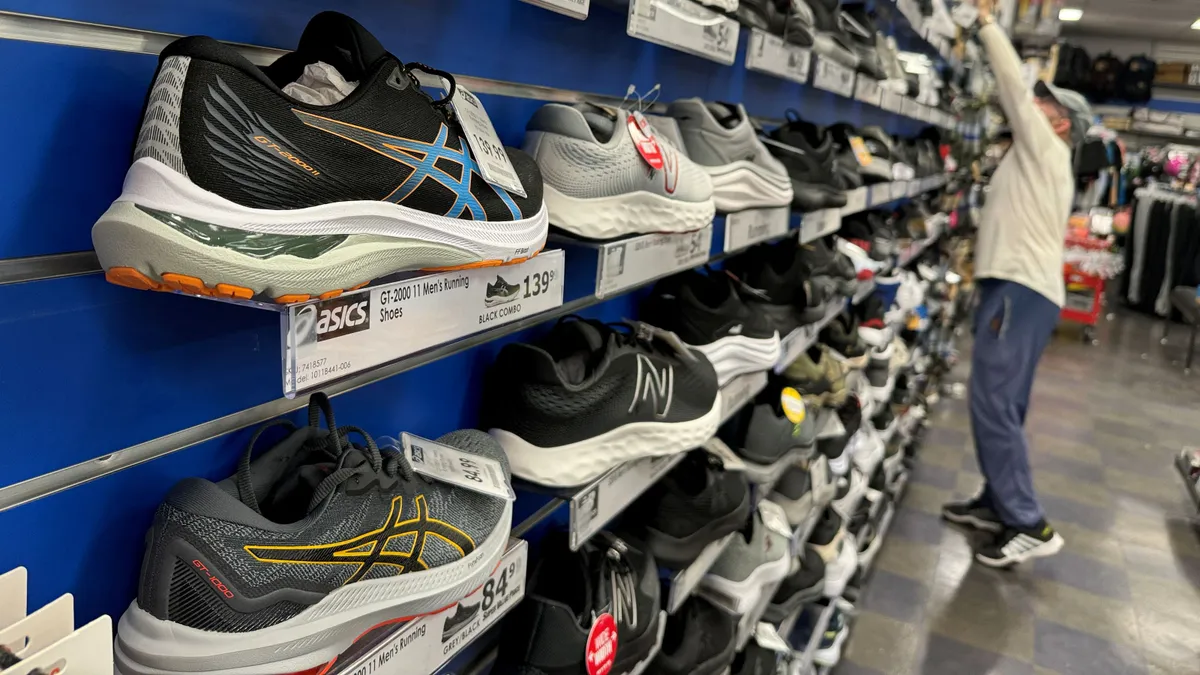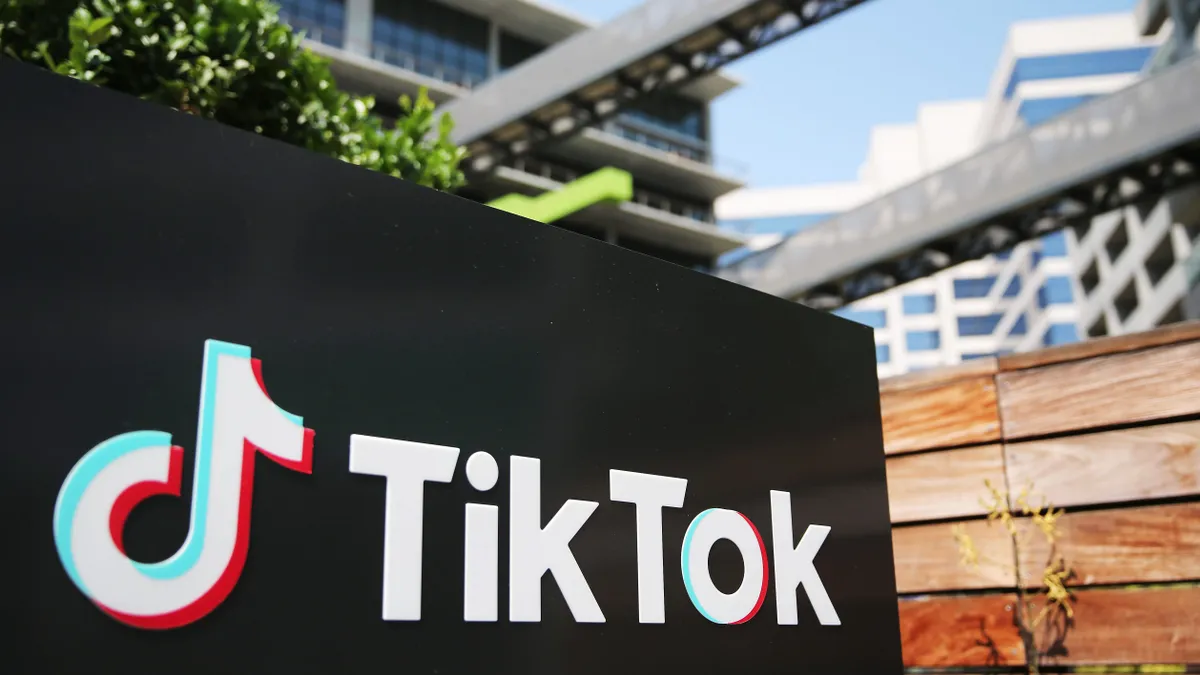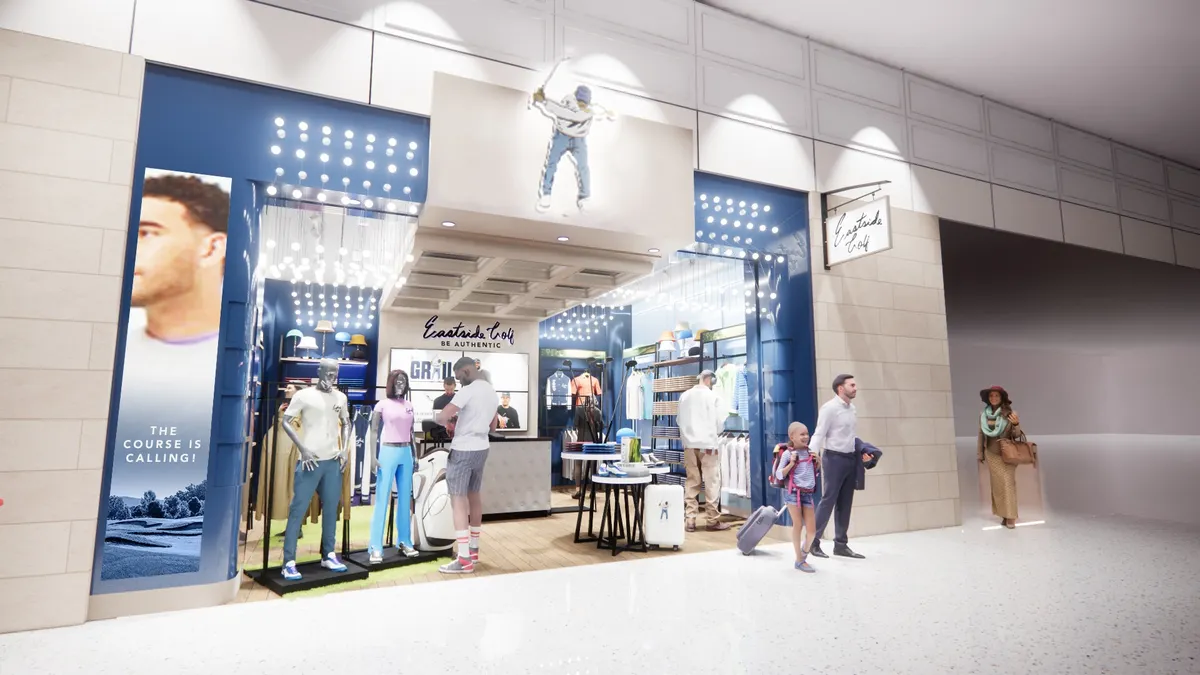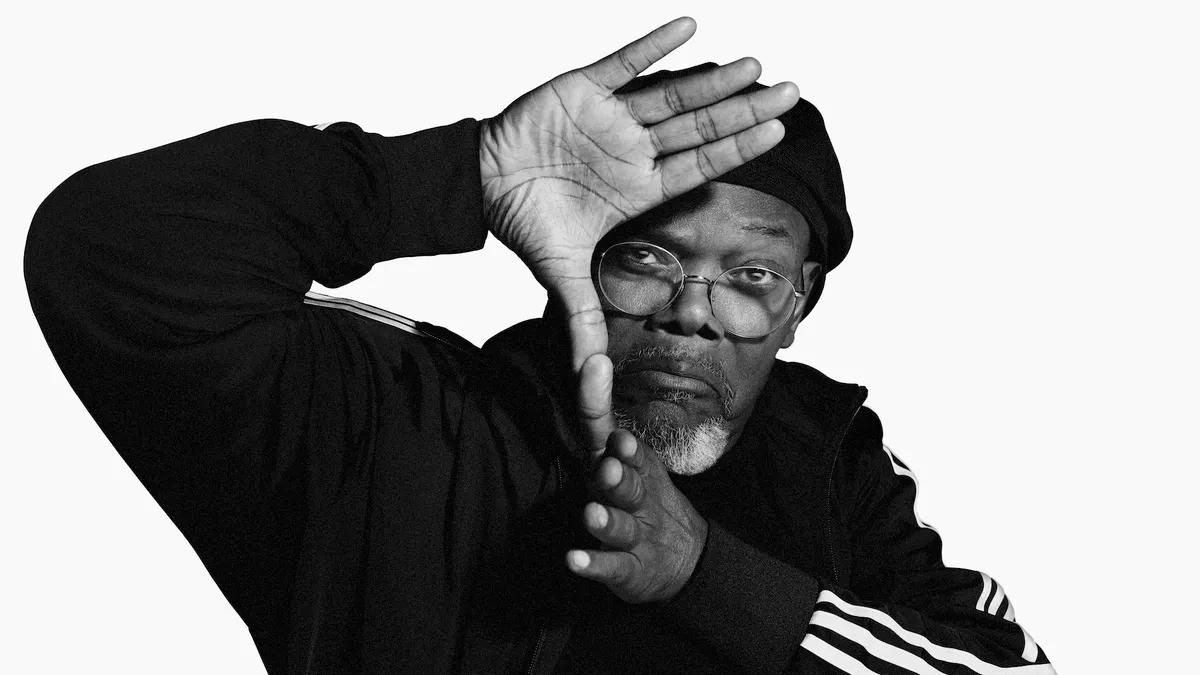In a world dominated by news of the e-commerce giant's success, Amazon is retail's Jay Z — impossible to ignore. And just like Tom Brady, Bill Gates and other figures that command the spotlight, the company is the subject of countless rumors, myths and speculation.
Here are 10 of the most prolific questions, queries and concerns about Amazon — and how they stack up against reality.
How many U.S. Prime members does Amazon have?
Since launching Amazon Prime in 2005, the company historically stayed mum about how many members it had in its loyalty program. Into that void, researchers and analysts have tossed numerous estimates. Last October, Consumer Intelligence Research Partners estimated Amazon's U.S. footprint at 90 million members, up from an estimate of 85 million a few months before that.
This spring, Amazon finally coughed up a number. The company said it had more than 100 million Prime members — worldwide. But Amazon left unanswered the question of how many of those Prime members are in the U.S. In July, CIRP again tried to fill in the blank, pegging Amazon's current U.S. Prime membership at 95 million. If correct, that estimate would account for roughly three-fourths of American households and leave just 5 million Prime members scattered around the entire rest of the world.
"That does not seem even close to accurate," Moody's Lead Retail Analyst Charles O'Shea told Retail Dive in an interview. He pointed to Amazon's sizable international sales — which at $54.3 billion were more than a third of the company's total retail sales — and relative prevalence of brick-and-mortar shopping in the U.S. compared to much of the rest of the world.
In a report last August, O'Shea called estimates of 85 million domestic Prime members "seriously overstated" and "highly improbable." At the time, he estimated the figure for U.S. Prime members at closer to 50 million. Morgan Stanley analysts, meanwhile, have estimated from survey work that U.S. membership flattened in 2016.
All that said, the e-tailer's known global Prime base is still quite formidable and provides the company with a loyal set of customers that spend significantly higher than the casual Amazon shopper.
Does Amazon now sell more products through its marketplace?
For the first time in company history, Amazon cracked Fortune 500's top 10 landing at No. 8 in 2018. That's in no small part thanks to the dramatic growth of sellers on the Amazon Marketplace.
Last year, Amazon sold more products on Amazon Marketplace for the first time, with products being purchased from over 300,000 small- and medium-sized businesses, according to an April letter to shareholders from Amazon. Fulfillment By Amazon also shipped billions of items for these third-party sellers. International selling has also grown substantially and cross-border commerce now makes up 25% of all third-party sales. Credit Suisse has put Marketplace's sales at $135 billion, and that could expand to $259 billion by 2020, according to figures cited in Entrepreneur magazine.
As Amazon Marketplace has grown, the company has put in place new programs to tackle the issue of counterfeit goods. "Amazon is hypersensitive about the safety of items and about the quality or the authenticity of items. Whatever you're selling you have to make sure you're not accruing too many complaints or the sharks start circling," Chris McCabe, who consults marketplace sellers as owner and founder of EcommerceChris.com, told Retail Dive. McCabe, who is also a former Amazon performance evaluation and policy enforcement expert, said many third-party sellers aren't fully aware of the situations they could run into when it comes to claims of inauthenticity, as well as intellectual property and trademark violations before they start on Amazon Marketplace.
Does Amazon spell 'retail apocalypse?'
Amazon has become shorthand for the rash of store closures and bankruptcies often colloquially called the "retail apocalypse." (Even the U.S. president has chimed in.) In reality, the e-commerce company does present a major competitive threat in combining low prices, high convenience, patient shareholders and a nearly infinite selection of products and, more and more, services on its site. But there are a lot of disruptive forces out there besides Amazon.
Looking at retail bankruptcies, executives at companies filing Chapter 11 have indeed cited in court filings the shift to "e-commerce" as among the factors that drove them into financial crisis. But many of those retailers — among them Toys R Us, Gymboree, Payless, Claire's, rue21, Nine West and others — also had large debt loads leftover from private equity buyouts or ill-timed expansions. Financially healthy retailers have been able to invest and adapt with much more success. (Consider, for example, the inverse trajectories of The Children's Place and Gymboree.) Beyond debt and changes in shopping, the U.S. is typically viewed as overstored, and consumers are spending less on stuff and more on experiences.
Apparel is a good case of misperceptions. In apparel, Amazon gained 1.5% of the market last year for a total of 7.9%, putting it in the No. 2 spot, behind Walmart, according to an April report from Morgan Stanley analysts. Amazon's share, driven by Prime, grew at a far faster rate than anybody else. And it came largely at the expense of department stores and specialty retailers, such as Sears Holdings, Macy's, Ascena and J.C. Penney, according to the Morgan Stanley report.
All that said, Amazon's nearly 8% share is still fairly modest in a fiercely competitive market that is starting to respond to the e-tailer's threat. The next two market leaders after Amazon, Target and Kohl's, together control more of the market (9.3%) than Amazon, according to Morgan Stanley data. The major off-price names — TJX, Ross and Burlington, all of which are adding stores this year — also control more of the market (8.3%) than Amazon. They, too, are stealing their share from department stores and other apparel sellers but typically get much less credit in the media for doing so.
How much are Amazon employees paid?
The answer to this question differs widely depending on the parameters. If you look at salary data at the corporate level, the average salary at Amazon is $153,320, with salaries ranging from $107,749 at the 25th percentile to $185,099 at the 75th percentile, according to salary tracking site Paysa.
Yet, in Amazon's letter to shareholders in April, the company disclosed that the median salary across the board at Amazon is just $28,445 a year. Despite the company's reputation as a tech disruptor, most of the people it employs are not engineers, but warehouse workers that fuel its e-commerce delivery ambitions. Amazon employs 560,000 people globally and anticipates hiring 50,000 workers for its new headquarters.
While Amazon is doubling down on warehouse hiring to fuel its same- and next-day shipping ambitions, those jobs are on par or worse than industry standards, Mark Meinster, executive director at Warehouse Worker Justice Center, told Retail Dive in an interview. Most of the company's new facilities primarily employ part-time workers, who are generally paid between $11 and $14 an hour. Full-time workers are paid between $12 and $15 an hour, which pales in comparison to Walmart's rate of $15 to $20 an hour for direct hire warehouse workers, according to Meinster. It's also notable that many new Amazon warehouses are in urban areas with higher costs of living, whereas traditional brick-and-mortar warehouses are in suburban or rural areas.
In a statement provided to Retail Dive, an Amazon spokesperson said: "In the U.S., the average hourly wage for a full-time associate in our fulfillment centers, including cash, stock, and incentive bonuses, is over $15/hour before overtime. That’s in addition to our full benefits package that includes health, vision and dental insurance, retirement, generous parental leave, and skills training for in-demand jobs through our Career Choice program, which has over 16,000 participants."
"What workers talk about more than anything is how much they are harassed by managers to make rate," Meinster said. "What Amazon has been able to do is use individual employee tracking and data to get workers to work as fast as possible. It's a very difficult job, turnover is really high."
Amazon, however, refutes this point. "We do not track nor do we have the intention to track the location of our associates. We develop and implement innovative technologies in our operations to enable an incredible customer experience and to enhance the safety and ergonomics of our processes," an Amazon spokesperson said in a statement emailed to Retail Dive.
How bad is it working at Amazon?
Amazon Glassdoor Rating: 3.8
Ever since an article from The New York Times broke in 2015 detailing the experience of numerous Amazon employees, the e-commerce giant has had a reputation for fostering an intense and, by some accounts, toxic workplace. The company certainly holds employees to high standards, with an extensive list of leadership principles that encourage workers to be "vocally self-critical," among other things, but Amazon also receives 3.8 stars out of 5 on Glassdoor and there are plenty of employees who thrive in the demanding atmosphere that it breeds, even leading the company to be named one of LinkedIn's top places to work.
Amazon's high turnover rate is also not unusual, either with tech companies or with retailers. In fact, tech and retail are two of the industries with the highest talent turnover, according to LinkedIn. While Amazon has a reputation for burning through employees, the cost of training new ones isn't high enough to be a real deterrent for the company, and Amazon's continual dominance shows that having high expectations is not necessarily a bad thing, Hart Posen, associate professor of management and human resources at the University of Wisconsin, told Retail Dive.
"There's a natural tendency to equate tough work practices with a bad corporate culture and I think that's a mistake," Posen said, noting that industries like banking are similarly cutthroat. "Is Amazon, for many of their employees, a fun place to work? Probably not, particularly if you're a warehouse employee. They clearly work those people extraordinarily hard and are very tough on them. Is that good or bad? Certainly, from a performance perspective, it might very well be good."
Is Amazon a kids-only club?
It's not just young people shopping on Amazon.
Being an e-commerce channel, the retailer lures in a lot of young shoppers, who are both potentially more digitally fluent than older generations and also more comfortable buying online. That being said, those aren't the only kinds of shoppers that the company attracts. A recent study by Cowen revealed that while 90% of shoppers aged 18 to 55 purchase from Amazon, a similarly large majority (82%) of shoppers over 55 listed Amazon as their preferred shopping channel or one of their preferred channels.
It is true that more young shoppers listed Amazon as their sole preferred channel (24% of 18 to 24 year-olds and 25% of 25 to 34 year-olds) — a number which drops significantly for older consumers, to 16% for 45 to 54 year-olds and 9% for customers over the age of 55. Yet the key values Amazon offers to customers — convenience, a large assortment, comprehensive user reviews and free shipping — are equally as appealing to older customers as to young ones.
"Amazon is wildly popular with Gen Z and millennials. It's also wildly popular with Gen X and baby boomers," Jeff Fromm, co-author of "Marketing to Gen Z," told Retail Dive in an interview in May, noting that it's a common misperception that Amazon is only popular with younger generations. "Our research suggests it's just as popular with baby boomers as millennials. One of the appeals of Amazon is that it becomes an opportunity for me to make sure I'm getting a great deal."
What share of e-commerce does Amazon command?

Source: One Click Retail
Last year, Amazon captured 44% of all U.S. e-commerce sales and 4% of total U.S. retail sales, roughly $200 billion, according to a report from marketplace analytics firm One Click Retail earlier this year. Another estimate from JP Morgan pegged Amazon's market share at 40% of all e-commerce sales last year. Those analysts say Amazon's U.S. gross merchandise volume is on pace to catch up to Walmart's in two or three years.
Amazon's dominance over online sales is expected to continue and may rise as high as 50% in the next few years, according to JP Morgan analysts. By 2020, analysts at Telsey Advisory Group predict the e-commerce giant will command nearly 10% of total retail sales, with food and drug categories a big growth opportunity.
With over 100 million global Prime members now, Amazon has developed an ecosystem that's proven to be irresistible for shoppers looking for free and fast shipping of consumer goods, apparel and other products and services. Amazon is also increasingly stealing market share from rivals on important sales holidays like Black Friday and Cyber Monday, according to Earnest Research. The company is also setting e-commerce records for its made up summer holiday, Prime Day. This year, Prime Day was the company's biggest global shopping event ever, surpassing Cyber Monday, Black Friday and the previous year's Prime Day.
Amazon is also generating more online traffic than other retailers — specifically, five times as much traffic as Walmart.com, according to an April report from SimilarWeb. Amazon's traffic was of higher quality, with visits averaging over 2.5 minutes longer and taking in five more pages per visit. The differences were especially pronounced on desktops — where most e-commerce still takes place — with Amazon taking 48% of the share to Walmart's 28%.
Does Amazon really have the lowest prices?
Amazon has a reputation for being less expensive than its competitors, it's part of what propelled it from a bookstore undercutting market leaders Barnes & Noble and Borders, to the retail juggernaut it is today. So it may come as a surprise that it's not always the cheapest.
But it is the best at constantly and continuously monitoring prices across the internet, so that price matching is a moving target.
Amazon uses dynamic pricing algorithms to check and update pricing up to every 15 minutes, explains Guru Hariharan, CEO of Boomerang Commerce: "Automated pricing decisions and updates are then made based on a number of variables including the price of that same product on other competitor retail sites."
Research from Boomerang Commerce sent to Retail Dive shows how often Amazon matches prices, and a couple of instances where it has either the highest or lowest price on a single, specific item.
SPANX® Faux Leather Leggings price comparison table
Lowest Price| Date | Amazon | Nordstrom | Saks | Bloomingdale's |
|---|---|---|---|---|
| 7/12/18 | $90.0 | $64.9 | $98.0 | Out of Stock |
| 7/11/18 | $90.0 | $98.0 | $98.0 | Out of Stock |
| 7/10/18 | $90.0 | $98.0 | $98.0 | $98.0 |
| 7/9/18 | $90.0 | $98.0 | $98.0 | $98.0 |
| 7/6/18 | $90.0 | $98.0 | $98.0 | $98.0 |
| 7/5/18 | $90.0 | $98.0 | $98.0 | $98.0 |
| 7/4/18 | $90.0 | $98.0 | $98.0 | $98.0 |
| 7/3/18 | $90.0 | $98.0 | $98.0 | $98.0 |
| 7/2/18 | $90.0 | $98.0 | NULL | $98.0 |
| 6/29/18 | $98.0 | $98.0 | $98.0 | $98.0 |
| 6/28/18 | $98.0 | $98.0 | $98.0 | $98.0 |
Source: Guru Hariharan, CEO of Boomerang Commerce
Data Source: Boomerang Commerce Market Intelligence Pricing Study (June 28 – July 12, 2018)
Amazon may have cultivated a reputation for being the low-price leader, but that brand promise has evolved to one of value, and that value equation is going to be different for different consumers. "Amazon's goal is to provide the best value across the widest assortment of products, delivered to shoppers in the timeframe consumers want," said Hariharan. "This doesn't necessarily always mean Amazon has to be the cheapest offering all the time, but it will often 'price follow' its top competitors in any given category for highly shopped products to provide value to the consumer."
"Through its dynamic pricing algorithms, Amazon takes a test and learn approach to determine what the best price is for a product at any given time to drive a positive price perception with and ultimately purchase by consumers," he said. "Even when Amazon's price isn't the absolute lowest, consumers (e.g. Prime Members) will also be 'loyal' to Amazon simply for the convenience of shopping with a trusted retail brand."
Amazon may not always be the cheapest, but it may not have to be anymore. It just has to be perceived as such.
How much marketing muscle does Amazon have?
Amazon is well-known for its plethora of online offerings, as well as its AWS service, but the retailer's advertising unit could be moving up. Already, the e-tailer is popular with marketers, especially during the holiday season. A Forrester report found that its clients already spend 45% of their ad budgets on Amazon during the holiday season, and it's not hard to see why: the company attracted 76% of online holiday shoppers last year and is edging closer to the frontlines of the apparel war.
The retailer's success is putting pressure on Google and Facebook, who don't have the benefit of Amazon's extensive customer purchase data to lure marketers to their platforms. This year alone, Amazon's ad revenue is expected to jump 63.5%, which would top $2 billion for the first time in the company's history, according to eMarketer. If things continue as they are, Amazon is likely to form a triopoly with Google and Facebook in the top slots of the advertising industry, giving the retailer another outside source of revenue to fall back on.
The potential of Amazon's advertising unit has given other marketers pause for several years, but Amazon took several steps in 2017 to secure its position as a serious disruptor in the industry, per Marketing Dive. In addition to opening an advertising office in New York, the e-commerce giant also planned to test retargeting ads this spring, a potential threat to Google's advertising model.
Deborah Weinswig, founder and CEO of Coresight Research, noted in emailed comments to Retail Dive that while it's not an easy prediction to make, the success of AWS is a good sign for Amazon's advertising unit, which "could be its next highly profitable segment."
Just how popular is Alexa?
Few retail initiatives have garnered as much attention as Amazon's voice assistant Alexa. From star-studded commercials to using the name "Alexa" to lead off jokes on late-night TV, one might think everyone is chatting with the tech and using the interface to shop.
But are they really?
Total retail sales for 2017 were $3.5 trillion, according to the National Retail Federation. Of that, some $2 billion was transacted through voice assistants, according to estimates by OC&C Strategy Consultants. A veritable drop in the bucket.
Of course, voice technology is new and there's a lot of runway to grow this commerce channel. OC&C Strategy Consultants expect voice sales to grow to $40 billion by 2022 and from there, who knows?
But Alexa isn't the only game in town, not anymore. Sales of Google Home smart speakers recently overtook Amazon's Echo for the first time, according to research firm Canalys. Microsoft Cortana and Apple HomePod are also strong contenders. Amazon's early advantage makes it a front-runner, but it also had the race largely to itself until this year. In 2016, Amazon commanded a whopping 88% of the market with Google a mere 8.7%, but flash forward to the end of 2017 and Amazon's share had dropped to 51.8% as Google surged to 35.7%, according to Strategy Analytics (the remainder was split among others).
Smart home products and ecosystems are also integrating voice and aligning with Apple, Google or Amazon. It's the fastest growing consumer technology category and roughly 20% of homes now have at least one of these devices, according to The NPD Group, which estimates that 25 million voice speaker products were sold in 2017 and 37 million are now in the market. Unit growth is currently forecast to be 60% in 2018.
But device ownership isn't an indication of consumer interaction with voice technology, nor does it indicate high numbers of transactions are being made. Not yet anyway.






















